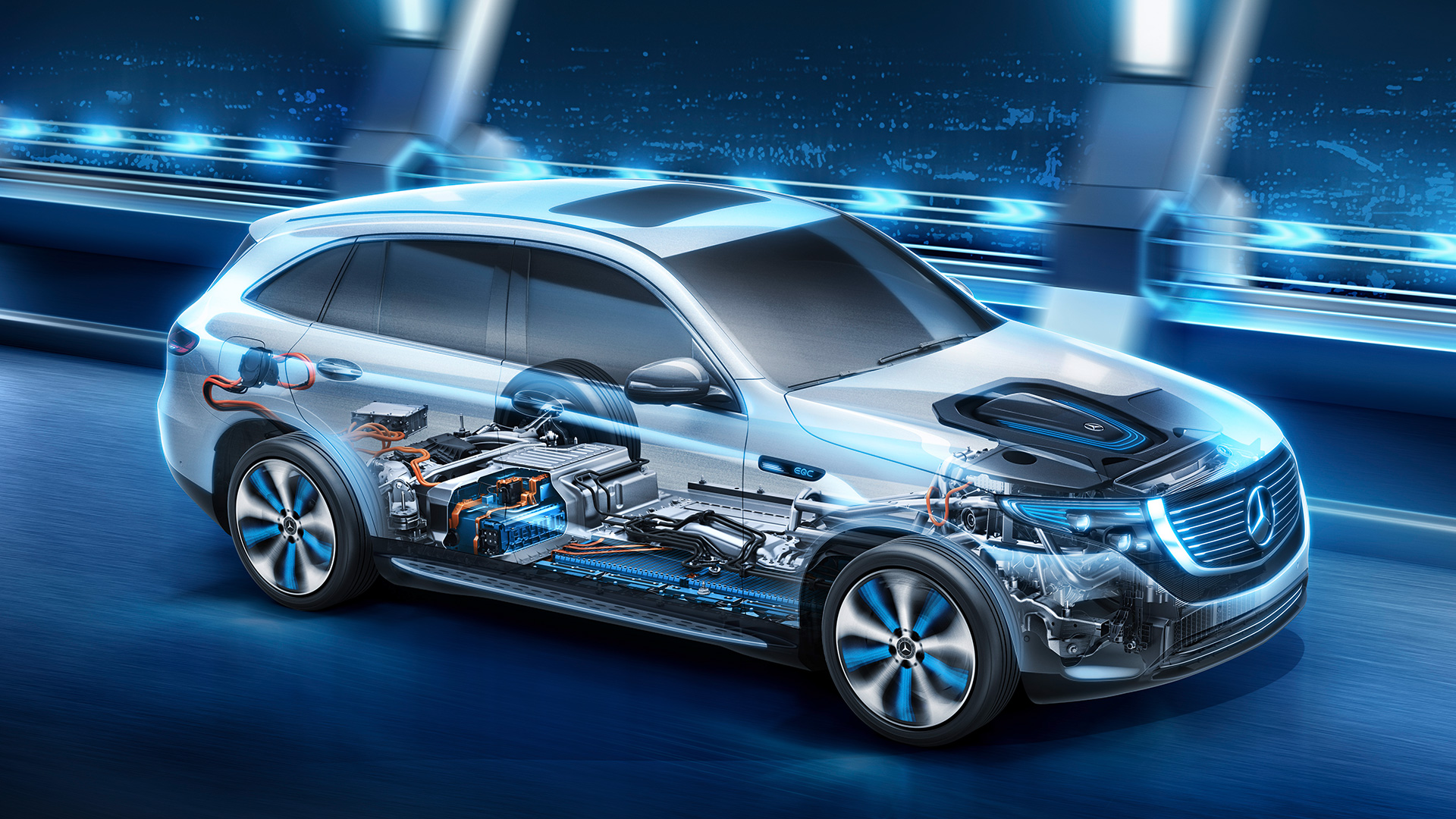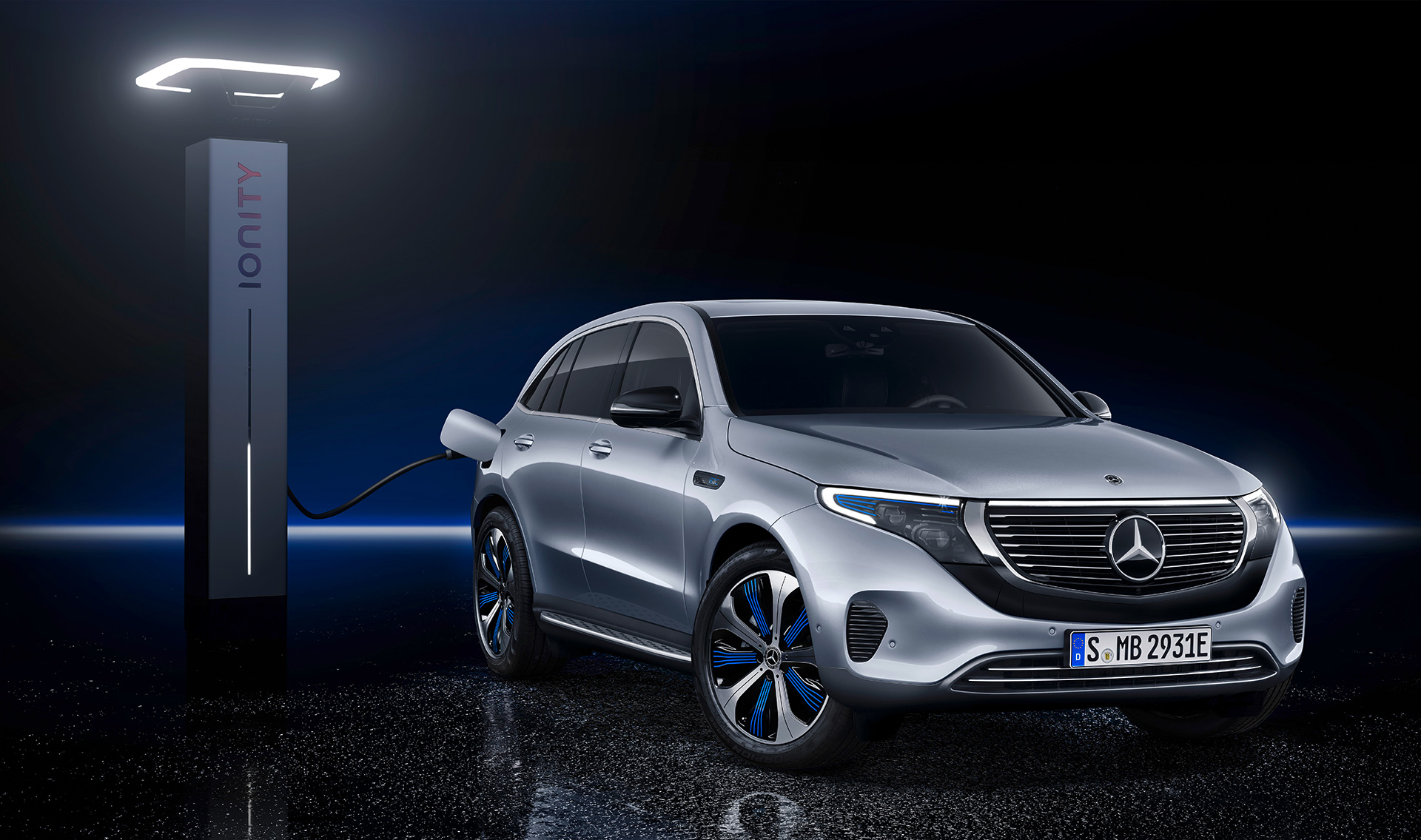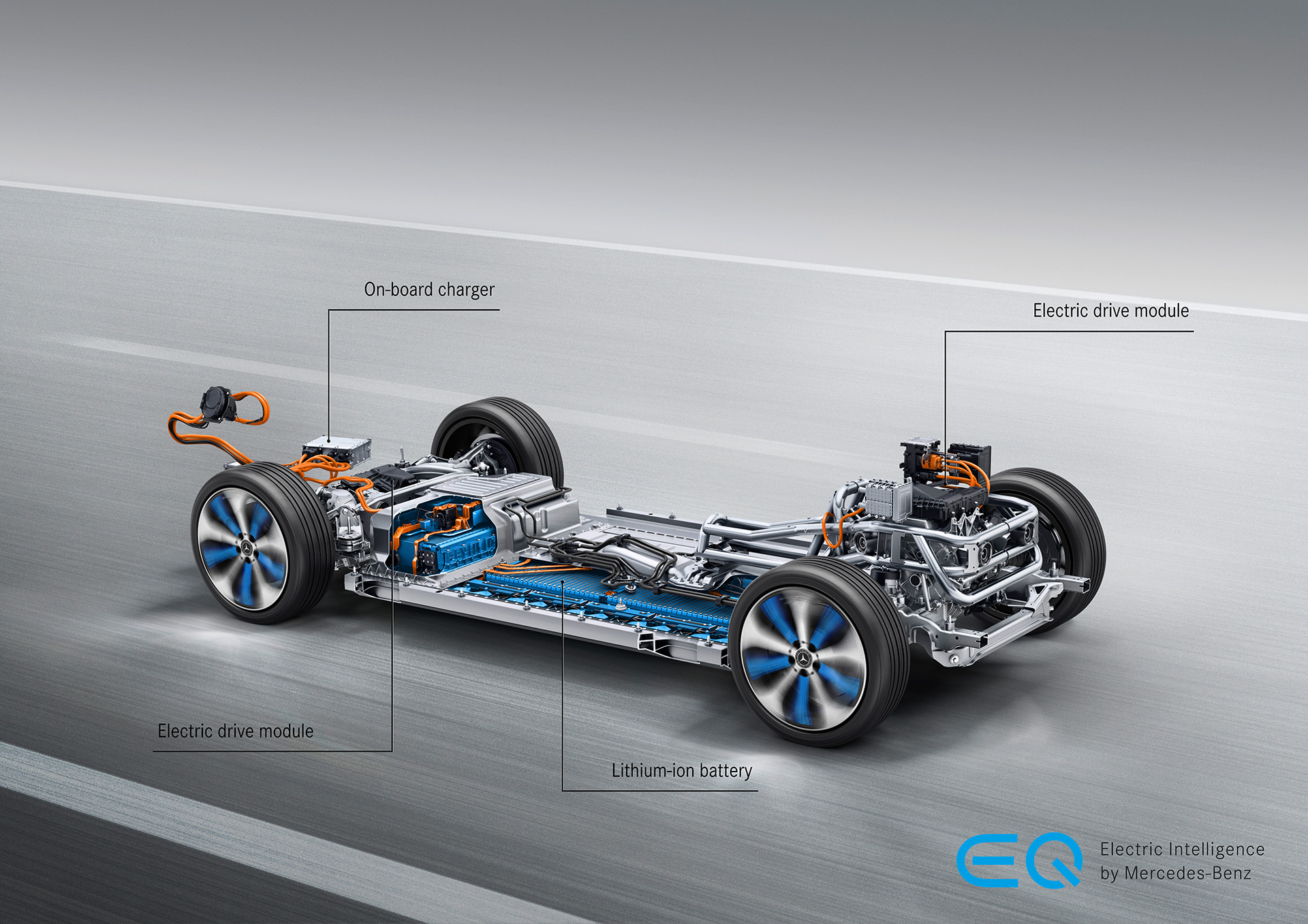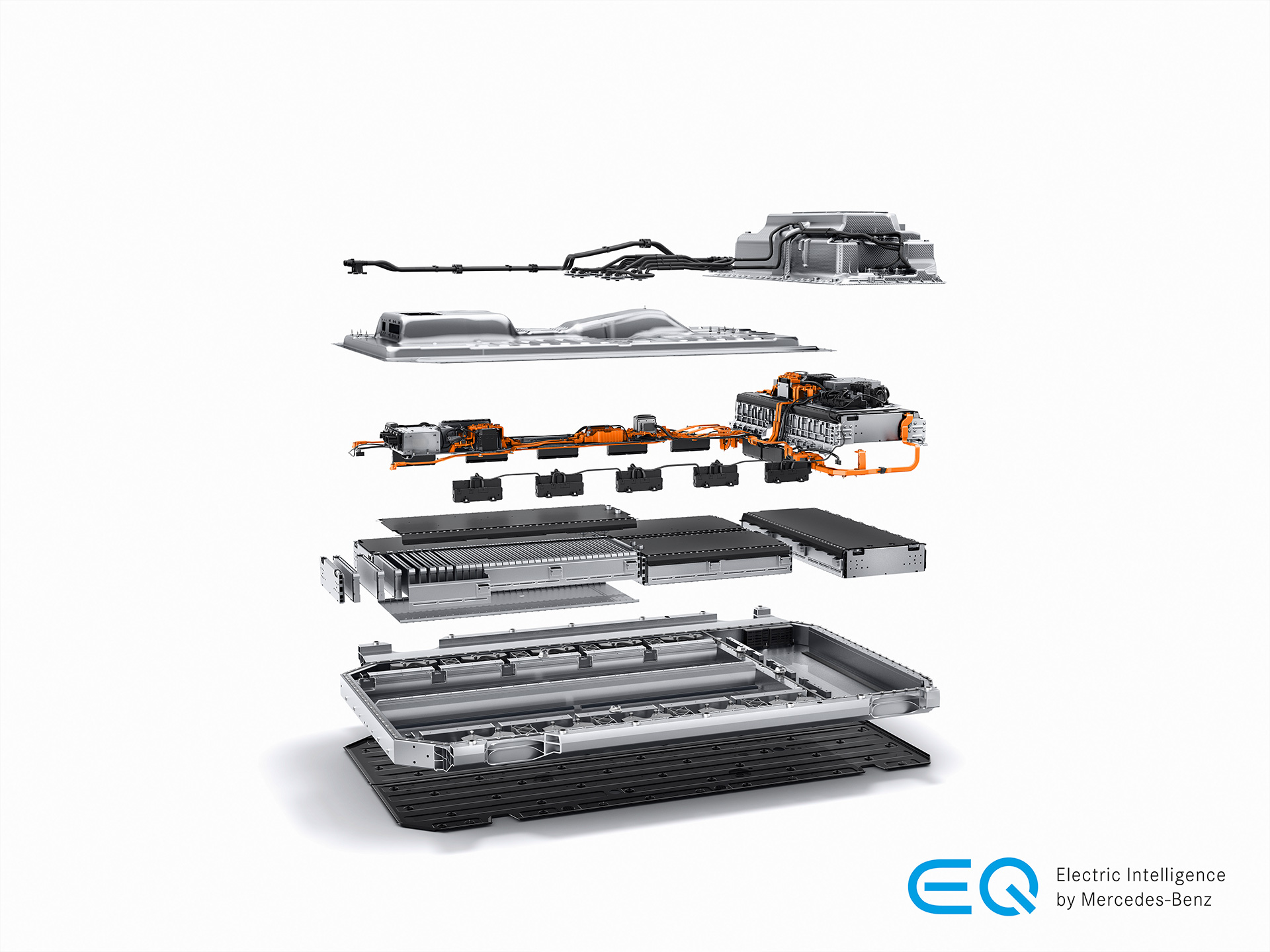

When Mercedes debuted its EQC 400 electric SUV this week in Stockholm—the first in a long line of EVs that will, presumably, eventually overtake the brand’s internal-combustion engines—the smart-looking new machine offered a uniquely Mercedes take on EVs. Though its announced range of just 200 miles fell distinctly flat (prompting the company to quickly walk that back by stating the final mileage was still TBD, but likely around 280 miles), the compact SUV brought a new design aesthetic to the lineup, as well as the company’s usual engineering prowess to maximize its electric powertrain.
But it also brought a new feature, Eco Assist, that might generously be described as a “collaboration” between driver and machine in the interest of squeezing even more efficiency from that powertrain. The system, under a narrow-but-common band of circumstances, actually tells the driver to lift his or her foot of the accelerator to let the quick-thinkin’, data-processin’ computer manage the momentum during a coasting situation, improving the regenerative braking capability without sapping speed at the same time. The system uses navigation data, traffic sign recognition, radar, and the car’s stereo cameras to anticipate things like cresting hills, traffic, or upcoming reductions in speed limits, then throwing the driver a “foot off accelerator” prompt in the instrument cluster. The car then modulates motor activity to either let the car coast or engage “recuperative” mode to pump power into the battery.

Though a variation of the system has been announced for the S-Class hybrid due in the United States next year, that model, the S560e, mostly relies on engine start-stop to do its dirty work, switching off the engine when the driver is prompted to lift off the throttle. The relatively modest battery/motor combination in that vehicle—it offers an all-electric range of 25 miles—means the impact is greater when modulating engine power rather than regenerative braking. The new EQC, however, depends entirely on regen and careful power application to achieve its best mpg-equivalent.
The circumstances in which Eco Assist rears its head vary. The system pays attention to curves, speed limits, intersections, traffic circles, and gradient along the current path or programmed route, then continuously generates coasting simulations in its AI thought bubble. The system then constantly computes whether coasting would be the best option for the powertrain for any stretch of road, throws up the prompt if so, then hits the regen as necessary without compromising speed or momentum. (A diagram will also appear to give the driver the reason for the recommendation, according to Mercedes.)
In a downhill-followed-by-an-uphill situation, for instance, the EQC will initiate regen on the downhill and automatically adjust to maintain speed, then turn off for a resistance-free coast to start the uphill portion. The light will then switch off, signaling to the driver to get back on the accelerator. Similarly, if it notices a speed limit drop at the top of a hill, it will coast over and let the car drop down to the new speed. Similar modes can anticipate the impact of upcoming traffic on speed, using regen to slow the car to feed the battery and then automatic coasting to keep the pace up if the car ahead of you regains its speed.

It all sounds excruciatingly efficient—but of potentially dubious true benefit, given the likelihood that most drivers will quickly start ignoring the prompts completely, or deactivating the system of Mercedes allows it. And the company hasn’t announced, nor responded to queries about, the actual anticipated benefits of this system in the fully electric SUV. How much power can Eco Assist really conserve? No idea yet, but it does smack more of Mercedes working to achieve corporate efficiency goals, rather than fulfilling the desire of Mercedes owners to be particularly miserly.
On the other hand, human drivers are invariably the culprits when it comes to watering down those real-world efficiency ratings, thanks to behaviors like jackrabbit starts at every stoplight and chilling in the mall parking lot for 20 minutes with the A/C on waiting our kids to show up. Who could blame the carmakers for trying to claw some of that back however they can?

But perhaps even more important than the objective benefits: Is this degree of driver involvement in pursuit of hypermiling at odds with our surging awareness of how much we should keep from distracting said drivers from the basic task of, well, driving? We’re evolving towards an era of radically improved safety via advanced driver assistance systems, but in their global rollout many of them actually increase the chaos present in a modern vehicle. Features that make it easier to stay out of trouble also tend to clutter up our senses with flashing alerts and assorted alarms if we drift too far off-course. That’s precisely what they’re designed to do, of course—and since they’re safety systems, they tend to get a pass for such distracting behavior. What doesn’t get a pass, in my book, are essentially discretionary features meant to boost efficiency. So now we have to also lift off the pedal every time the car wants to throw a couple extra watts into the battery pack? Will that be every hundred yards? Every mile? Once an hour?
It’s bad enough, quite frankly, that the EQC 400 will also have paddles to let drivers dial in the degree of regenerative braking on the fly, a system deployed with varying degrees of success in cars like the Chevy Bolt and the new Honda Insight Hybrid. (The latter car also throws in its own brand of extreme driver engagement via some inscrutable mode options.) Ultimately, efficiency enhancements need to edge increasingly toward invisibility, not “engagement”—and they certainly shouldn’t be cloaked in marketing gibberish such as “comprehensive driver support,” the term Mercedes uses to describes a system in which we’re the ones actually helping them out. Not falling for that bit of whitewashing, Tom Sawyer.

Ultimately, we won’t know until the cars debut how obtrusive or flat-out annoying Eco Assist truly will be, nor do we know what sort of self-regulation Mercedes will introduce in the system precisely to keep it from being a distraction. (Though the benefit, of course, plummets, with every skipped coasting opportunity.) But it’s a pretty good bet that most drivers—remembering that we’re increasingly past the enthusiastic, hypermiling early-adopter stage of the EV rollout—won’t want any part of it. You go ahead and do what you have to do to maximize regen and coasting and whatever else, Mercedes EQC 400. Just figure out a way to leave me out of it.